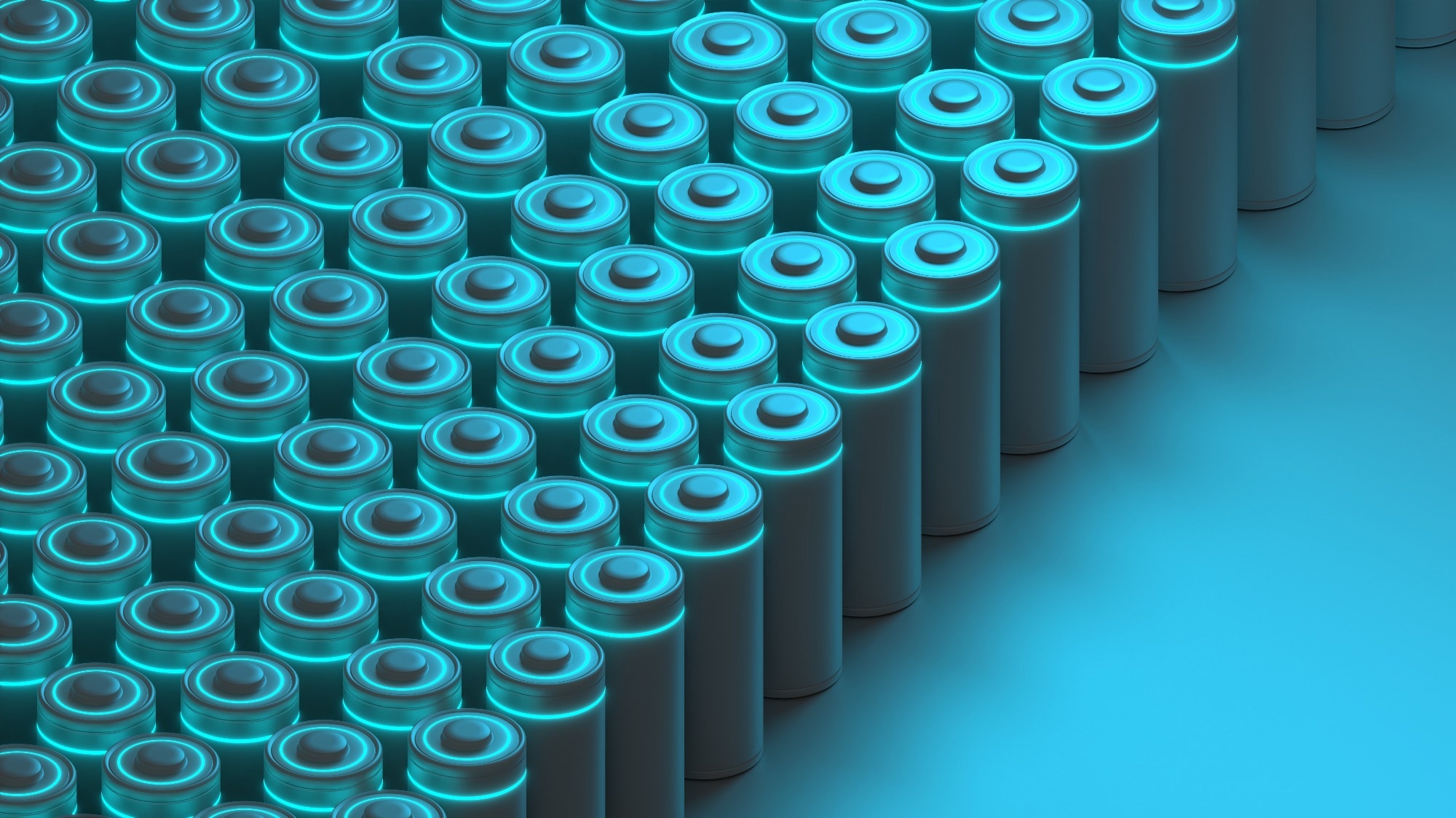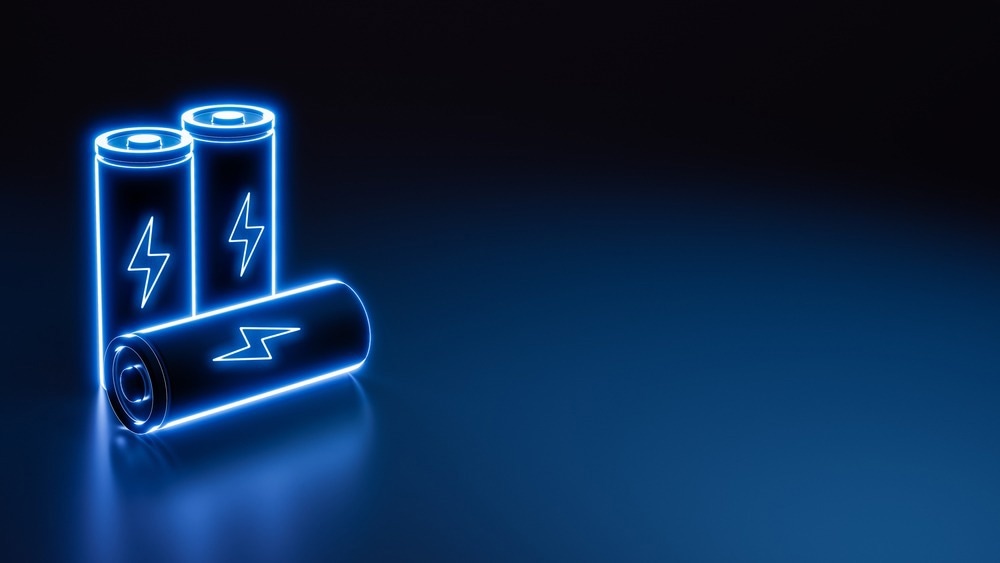Sponsored by HORIBAReviewed by Olivia FrostDec 1 2022
HORIBA, a global leader in microscopy and spectroscopy systems, provides an extensive array of instruments and solutions for applications across a broad range of scientific, R&D, and QC measurements. These instruments include various spectroscopy solutions, including Raman, fluorescence, custom spectroscopy solutions, and particle characterization.
This article will discuss the chemical analysis of lithium-ion batteries using Raman spectroscopy and beyond. Specifically, it will define lithium-ion batteries, their performance in the charge/discharge cycle, and Raman spectroscopy, which shows structural changes occurring in analyzed materials.

Image Credit: ShutterStock/ktsdesign
The Basics of Raman Spectroscopy
What is the Raman effect?
When light hits molecules, the primary process is elastic scattering, known as Rayleigh scattering. This increases with the fourth frequency power and is more effective for short waves.
Another process is called inelastic scattering, where the photons interact with the molecules at approximately ten power of seven or eight, depending on the materials. The molecules can gain lost energy during this interaction.
There are several processes in Raman spectroscopy, including the Stokes method, where the molecules gain energy.
The frequency of light does not change In Rayleigh light. In some events where molecules give energy to the light, Anti-Stokes scattering is used.
In Raman scattering, the photon or electron reaches the virtual state. When the energy of a photon is enough to come close to the electronic excited states, we have the pre-resonance Raman scattering.
Resonance Raman scattering occurs when there are interactions between the atom and photons. This method differs from classic Raman scattering when the virtual state is reached in the optical gap of the materials.
Raman scattering observes laser energy changes as it excites a molecular vibration. The unit used is relative to the energy.
Raman Spectroscopy of Metal Oxides
Metal oxides include cobalt, manganese, and nickel, which is based on basic materials for the lithium battery.
LabRam Evolution was used to carry out Raman spectroscopy for oxide materials and mixed oxide.
HORIBA provides technology called ViewSharp, where users can create the Z-plane for entire materials and cases where all materials become very sharp.
HORIBA also offers automated multi-point analysis within its ViewSharp software. The technology picks a Z coordinate for each point and automatically focuses. This is particularly useful for routine measurements and powder materials analysis.
The NVA plus model, integrated into the LabSpec software, enables the composition of maps or data. The software allows users to understand material changes using different measurements or variables.
Raman spectroscopy is sensitive to cobalt oxide material structure. Using the software information, users can carry out quality control tasks to determine how reproducible the material will be and how reproducible related products such as lithium-ion batteries are.

Image Credit: ShutterStock/RESTOCK images
Power is very important when measuring oxides or mixed oxides. It is crucial to consider what happens if researchers use measurements on low and high power, and then use measurements on low power again.
The spectra may show thermal changes. For example, you could see a very sharp peak for the low-power measurements, but the spectra could change significantly after applying the high-power. Therefore, thermal conditions and photo-structural damage occur in the samples. This is very important to understand when analyzing actual data.
Nickel oxide is an interesting material as it has a sodium chloride lattice, which, in theory, does not allow it to be analyzed in a spectrum. However, if oxygen exceeds or goes below a certain level, or there is a specific lattice distortion, peak detection is enabled in spectroscopy.
Spectrum analysis may be also carried out using low and high power, but there will be structural lattice damage of the lattice. The spectrum will reflect these damages and the material cannot be restored after high-power energy is released.
Mixed Metal Oxide Raman Spectroscopy
More interesting materials include mixed oxide. This includes nickel cobalt manganese oxide in the ratio 1:1:1.
Spectra changes after a very significant shift from low-power measurements and high-power measurements.
High power measurements refer to numbers slightly above 1 mW at the sample. There is a strong change in the peak position, while the peak’s shape becomes significantly broad.
When researchers carry out measurement in the same spot using low power and high power, and then low power, the structure cannot be restored and is reflected on the Raman spectrum.
Power influences changes in the material that are not reproducible. Any high-power measurements, such as the use of a laser, induces damage in dark materials such as oxide and mixed oxide. Power creates heat and structural changes.
How Raman Spectroscopy Helps People Understand the Importance of Lithium Batteries
Raman spectroscopy is important in studying lithium batteries. It is crucial to use the objective with a capacity to study distances of more than 8 mm when collecting actual cell data.
In the case of LiCoO2 cathodes, the crystal structure of the lithium is important. If the spectroscopy process is reversible, a lithium-deficient lattice is formed.

Image Credit: ShutterStock/Black_Kira
Users can map spectra area and apply multi-variable analysis to understand the distribution of the component in the material. In this case, the Raman spectroscopy helps identify the different structural levels and allows cycle calculations, including the ratio between a deficient lithium cobalt oxide and lithium oxide.
Raman spectroscopy helps identify battery issues and what happens to the material when charging, discharging, or deteriorating. Raman spectroscopy amplifies our understanding of material science and how we can modify the material to make it stronger.
The Application of Micro-XRF in the Lithium-Ion Batteries Industry
Micro-XRF allows users to detect elements. It is mostly used for the protection of lithium batteries.
Micro-XRFs provide unique transmission image features, with the capacity to clearly show every part of the battery. This allows users to recognize if there is a shortage or change in the battery.
For example, it can be applied to a lithium-ion battery and a contamination separator.
Micro-XRF offers small measurements with very high sensitivity, while also enabling spectral area mapping.

This information has been sourced, reviewed and adapted from materials provided by HORIBA.
For more information on this source, please visit HORIBA.